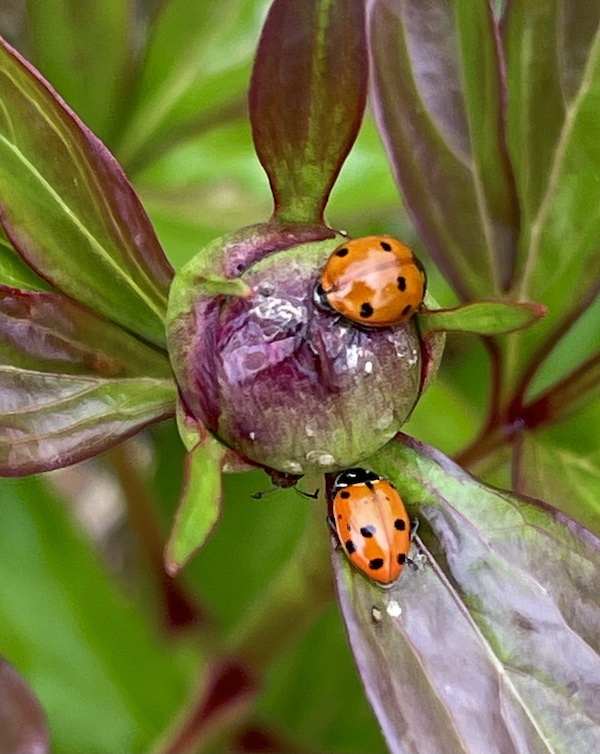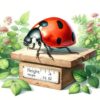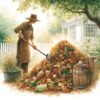Buying and introducing lady beetles to your garden: Does it Work?
Introduction
If you have your heart set on the fun of releasing ladybugs in your garden, this post will help maximize the success of purchased bugs. Purchasing ladybugs can be part of an overall beneficials solution. Known for their appetite for aphids and other harmful pests, ladybugs are a gardener’s best friend. This guide will help you select the best quality ladybugs for sale, ensuring your garden thrives, and provide ways to naturally attract these voracious predators.
Ladybugs 101
Ladybugs, or lady beetles, belong to the family Coccinellidae and are one of the most preferred natural predators in the gardening world. These beetles are not only charming with their distinct red and black spots, but they are also voracious predators of aphids, mites, and other pests that can damage plants. There are over 5,000 species of ladybugs globally, varying in color from red to yellow and in patterns from spots to stripes. The convergent lady beetle (Hippodamia convergens) is particularly noted for its effectiveness in pest control and is the most common species used in North American gardens. Ladybugs have a unique lifecycle that includes four stages – egg, larva, pupa, and adult – and understanding this cycle can help gardeners utilize these insects more effectively.
Ladybugs: The Wicked Predator
Despite their cute appearance, ladybugs are formidable predators. They play a crucial role in controlling the population of harmful insects in a garden without the need for chemical pesticides. A single ladybug can consume up to 5,000 aphids in its lifetime, making them an environmentally friendly solution for any gardener facing pest problems.
Purchasing High-Quality Ladybugs
- Source Reputation – Purchase from reputable suppliers known for their focus on beneficial insects or organic gardening. Look for positive reviews and consider recommendations from other gardeners or local nurseries.
- Health and Activity – Upon arrival, ladybugs should be active and healthy. They may appear dormant initially due to shipping conditions, but should quickly become energetic once acclimated.
- Quantity and Quality – Check that the number of live ladybugs matches the supplier’s claims. Reputable suppliers often add extra ladybugs to compensate for any in-transit loss.
- Species – Ensure you’re buying Hippodamia convergens, the species known for effective pest control.
- Delivery Conditions – Ladybugs should be shipped quickly and in conditions that ensure minimal stress and mortality. They are often sent with moistened sponges or wood shavings to help them survive the journey.
- Timing – Order ladybugs when your garden has active pests for them to feed on. This increases the chances they will stay and work in your garden rather than leave.
- Local Regulations – Before purchasing, check any local guidelines regarding the introduction of non-native species to ensure your gardening practices are environmentally responsible.
Fly and Be Free: How to Release Ladybugs in Your Garden
Releasing ladybugs into your garden requires careful timing and conditions to ensure they remain in the area and begin their work immediately:
- Best Time – Release ladybugs during the evening or early morning, as cooler temperatures reduce their tendency to fly away immediately.
- Moisture is Key – Water your garden before releasing them. The moisture helps keep them hydrated and makes the environment more inviting.
- Release Near Infestations – Gently shake the ladybugs from their shipping container onto plant leaves where aphids or other pests are prevalent. This direct approach encourages them to feed and stay.
- Avoid Chemicals – Ensure that your garden is free from pesticides. Ladybugs are sensitive to chemicals, and recent pesticide use can harm them or drive them away.
Master gardener tip: Buying lady beetles and releasing them in the garden is the easy part, but the real question is will they stay? In reality, there are much more efficient options for pest control, and studies show that within 48 hours, they will have left your local garden area. But, By making your garden environment hospitable to these beneficial insects, you can increase the odds that they stay around and help your ecosystem. To do that make sure there’s adequate food, water and shelter, and minimize the use of insecticide. You can also devise a strategy, as outlined in the next section, to attract beneficial is naturally to augment your body and release program.
Attracting Ladybugs Naturally
If you prefer to attract ladybugs naturally instead of buying them, here are some tips to make your garden more inviting to these beneficial insects:
- Plant Ladybug Attractants – Flowers like marigolds, cosmos, and dandelions are known to attract ladybugs with their pollen.
- Provide Shelter – Ladybugs look for sheltered places to lay their eggs, such as under leaves or inside dense foliage.
- Maintain an Aphid Population – While this might seem counterintuitive, having a small number of aphids can attract ladybugs naturally and keep them fed and happy in your garden.
- Avoid Pesticides – Using chemical pesticides can kill ladybugs or drive them away. Opt for natural pest control methods to keep your garden ladybug-friendly.
Conclusion
Ladybugs are a natural way to combat garden pests and improve plant health. By following this guide and choosing reputable suppliers, creating a beneficial attraction plan and making your garden hospitable, you can effectively integrate these beneficial predators into your garden care routine, ensuring a healthier, more vibrant garden. Whether you buy them or attract them naturally, ladybugs can significantly enhance the ecosystem in your garden.
References:












You must be logged in to post a comment.